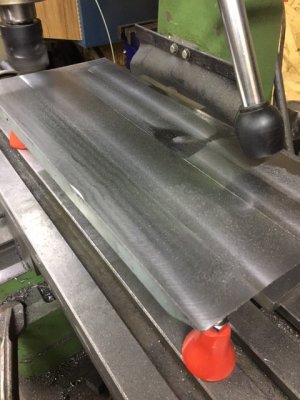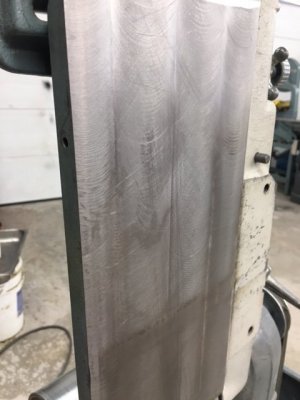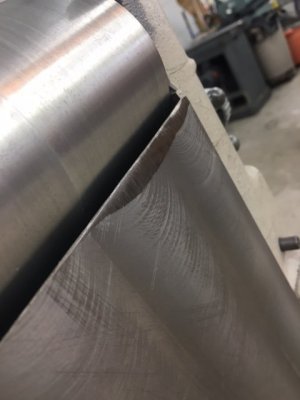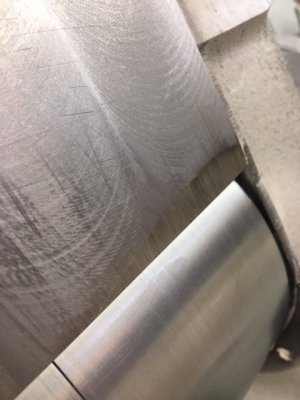calgaryguy
Chris
I've got a cast iron 'platen' from a large belt sander with a .030 worn side-to-side 'dip' in it. Nominal thickness of the casting is about .250 across the wide platen surface.
Similar to the low-looking spot in this pic
![GetFile.aspx]()
The face with the bolt holes facing the camera is ground at a 90deg angle to the large platen surface. I assume someone would have to use this surface to clamping as the unseen edge away from the camera has no edge.
I am, of course, looking to have this done cheaply. I've been told about, and read about 'blanchard grinding' like is used for resurfacing flywheels. etc.
Anyone in the forum know a place in Calgary that might do something like this for a reasonable price? REasonable being $50 or under - similar to a flywheel grind/resurface.
My other option is to attempt to do this with a friends mill/drill and a cutter.
Some people online have 'fixed' this with JB weld and then sand it smooth after, but the repair doesnt hold up very well from what I've read
Similar to the low-looking spot in this pic

The face with the bolt holes facing the camera is ground at a 90deg angle to the large platen surface. I assume someone would have to use this surface to clamping as the unseen edge away from the camera has no edge.
I am, of course, looking to have this done cheaply. I've been told about, and read about 'blanchard grinding' like is used for resurfacing flywheels. etc.
Anyone in the forum know a place in Calgary that might do something like this for a reasonable price? REasonable being $50 or under - similar to a flywheel grind/resurface.
My other option is to attempt to do this with a friends mill/drill and a cutter.
Some people online have 'fixed' this with JB weld and then sand it smooth after, but the repair doesnt hold up very well from what I've read






